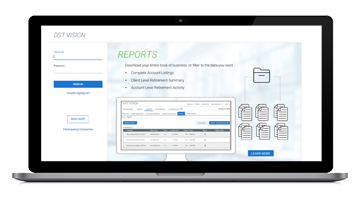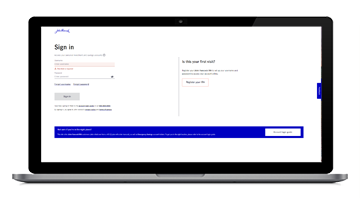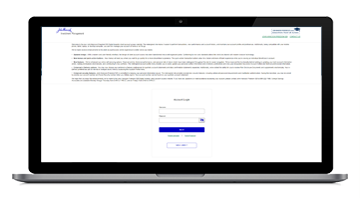Five reasons why 2025 could be another strong year for U.S. regional banks
We believe that U.S. regional banks are poised to benefit from several tailwinds in 2025, including a steepening yield curve, green shoots in loan activity, an acceleration in mergers and acquisitions (M&As), easing of the regulatory environment, and waning credit concerns. We believe these factors, coupled with attractive valuations, warrant an equity allocation to U.S. regional banks in the current environment.

A bright 2025 outlook on the heels of a solid 2024 recovery
U.S. equities registered strong gains in 2024, reflecting a highly supportive environment for risk assets. Stocks were propelled by a wide range of favorable developments, including positive global growth and falling inflation. These factors outweighed the effect of ongoing geopolitical tensions and global recession fears.
Early in 2024, U.S. banks were largely an afterthought for most investors. Concerns surrounding commercial real estate exposure as well as aftershocks from regional bank industry turmoil experienced in 2023 deterred interest in the group. However, continued fundamental strength across most banks proved that these fears were largely misplaced. As strong earnings results persisted throughout the year, banks significantly outperformed in the second half of 2024, leading to healthy gains for the year.
Periods of transition often yield surprises, and 2025 could generate plenty of uncertainty as a new U.S. presidential administration takes office and the U.S. Federal Reserve’s (Fed’s) drive to cut interest rates is challenged by recently uneven progress in easing inflationary pressures. However, we believe the following five tailwinds are likely to sustain the recent run of strong performance for U.S. regional bank stocks.
1 A normal-for-longer environment is likely to boost U.S. regional banks
There’s a common saying about bank business models: “Banks borrow short and lend long.” This saying is a broad generalization, as banks do indeed borrow short; however, they typically lend in the short to medium term and charge a credit spread to drive profitability. An inverted yield curve—an infrequent occurrence in which yields of short-term debt exceed yields of longer-term bonds, as seen throughout much of the period since mid-2022—poses challenges to this business model. In addition, prolonged periods of low interest rates can weigh on bank returns, as banks are less able to fully benefit from their long-term structural advantage from low-cost deposits.
However, we’ve recently seen the return of the yield curve to a more normal shape, as reflected by the resumption of 5-year U.S. Treasury notes trading at higher yields than 3-month bills for the first time since late 2022.
The yield curve recently turned positive after inverting in late 2022
Spreads between the yields of 3-month U.S. Treasury bills versus 5-year U.S. Treasury notes, 1/1/22–1/14/25
This recent fundamental change in interest rates to levels closer to long-term averages and a re-steepening of the yield curve—a normal-for-longer environment—present a more optimal environment for regional bank returns. These conditions are likely to support strong revenue and earnings growth in the years ahead, in our view.
Despite the headwinds of the extended period of near-zero interest rates and subsequent inverted yield curve, the banking industry still remained highly profitable in recent years and generated an 11% return on equity in the third quarter of 2024.1 In a normal-for-longer environment, we expect that bank profitability is likely to expand over time as loans and securities originated during the period of zero-interest-rate policy reprice at much higher levels.
Most banks have a combination of floating- and fixed-rate loans. While floating-rate loans repriced immediately as the Fed raised rates aggressively in 2022 and 2023, a large amount of fixed-rate loans have yet to reprice. The most common maturity of a fixed-rate loan on regional bank balance sheets is five years. Therefore, loans originated in 2020—the heart of the zero-interest-rate policy period—will be coming due this year and can be expected to reprice at a meaningfully higher rate. We believe that this trend of positive repricing should extend into 2026 and early 2027, laying the foundation for a strong period of revenue growth in the years ahead. We expect that the combination of positive repricing trends and improved operating leverage is likely to result in double-digit annual earnings growth for regional banks over the next few years.
2 Green shoots in loan activity
At around 3%,2 loan growth for the U.S. banking industry was relatively muted in 2024 as businesses, consumers, and banks transitioned to the normal-for-longer interest-rate environment. Although we’re not forecasting an immediate acceleration in loan growth, we do believe there are some reasons for optimism regarding a pickup in demand.
First, while interest rates remain elevated compared to the ultra-low levels that preceded the Fed’s aggressive rate hikes in 2022 and 2023, the Fed’s 100 basis point (bps) of cuts since September 2024 is likely to drive some customers to increase their borrowing levels, in our view. In addition, the more business-friendly incoming administration is expected to drive more capital spending. In 2024, bank management teams consistently attributed customers’ reluctance to borrow and launch capital spending projects to uncertainty surrounding the election and possible increased regulatory burdens. These fears abated in the wake of the election outcome, and we expect to see an increase in loan activity in late 2025 and into 2026.
3 Normalization in M&A
Consolidation has been a positive, long-term trend for the U.S. banking industry. Going back to 2000, the industry has averaged around 235 M&A deals a year. That said, 2023 and 2024 generated the smallest number of deals in decades. Regulatory agencies under the Biden administration proved to be a headwind as bank M&A (similar to M&A in other sectors) saw more scrutiny and a prolonged approval process. As a result, bank management teams took a cautious approach to strategic transactions. Postelection, management teams have been much more constructive in their dialogue. In fact, a January 21, 2025, statement issued by the acting chair of the Federal Deposit Insurance Corp. outlined several initiatives that the independent agency plans to prioritize, including streamlining the process for approvals of proposed bank mergers. With over 4,600 banks remaining in the United States, there’s still ample room for consolidation.
Financial institution M&A has declined in recent years
Number of FDIC-insured U.S. financial institutions and industry mergers and acquisitions (M&A), 2000–2024
In M&A transactions, acquiring banks can drive significant cost synergies and earnings accretion; meanwhile, acquired institutions usually receive a premium to their trading price for their stock, driving enhanced returns for the industry. We believe that a rebound in M&A activity is likely to support regional bank equity valuations in the year ahead.
4 Regulatory headwinds fade
The new administration looks to be much more business friendly. As a result, we expect to see some regulatory relief for the banking industry. For example, in December, the Fed announced that it will seek public comment “on significant changes to improve transparency of bank stress tests and reduce volatility of resulting capital requirements.”
While this improved regulatory environment isn’t a primary driver of our optimistic outlook, we view it as another positive for industry returns. Additionally, we don’t believe that Wall Street analysts have built much structural regulatory relief into consensus earnings estimates, and we believe that any positive developments could provide further upside to earnings.
5 Credit fears continue to wane
Despite persistent fears regarding commercial real estate, regional banks have demonstrated the strength of their conservative underwriting. Costs associated with deteriorating credit have remained well contained for the industry as a whole. For example, during last year’s third quarter, the median bank reported annualized net charge-offs of only 13bps. Bank management teams are closely monitoring for any potential issues, and they’ve recently continued to report that they haven’t observed signs of deterioration.
In addition to conservative underwriting, the Fed’s first 100bps of rate cuts helped to temper some of these fears in the second half of 2024 as borrowing costs declined meaningfully, in our view. Absent a material economic downturn, we believe that credit costs will remain low and investor concerns should continue to ease, supporting valuations for the industry.
Banks’ credit costs from commercial real estate have remained historically low
Charge-off rates for U.S. commercial banks on loans secured by real estate and loan loss reserves to total loans, January 2001–September 2024 (%)
Another positive factor: attractive valuations
Beyond the five tailwinds mentioned above, regional banks’ current equity valuations support our positive 2025 outlook for the industry. Regional bank stocks recently traded at a price-to-forward earnings multiple of about 11.83x based on what we view as conservative earnings estimates; on a price-to-book value basis, they recently traded at 1.15x.1 These valuations represent a discount compared with historical averages as well as a substantial discount relative to the overall market. These valuations don’t appear to us to reflect prospects for an industry experiencing revenue and earnings growth. Driven by strong revenue growth, the group is expected to see earnings-per-share growth in the mid to high teens in both 2025 and 2026.2
In September 2024, we discussed how a normal-for-longer interest-rate period could be advantageous for regional bank stocks. We drew parallels to the Fed’s aggressive rate hikes in 1994, which were followed by a period of sustained higher rates. If the Fed pauses or makes only a couple of cuts in 2025, it would be analogous to this period after the 1994 hikes, when the central bank cut rates three times before pausing in January 1996. While we don’t know how the market will react under this scenario, history tells us that it’s likely to benefit the share prices of undervalued regional bank stocks.
Fed rate normalization in the mid-1990s helped lift bank equity valuations
The U.S. federal funds rate (%) and the price-to-book (P/B) ratio of the SNL U.S. Bank Index, January 1994−December 2000
An opportunistic approach to today’s potential for regional bank stocks
As we navigate markets today, we continue to take a long-term approach while adhering to an investment philosophy that seeks to take advantage of situations in which valuations don’t appear to us to fully reflect market potential. Despite recent improvement in bank stocks, we continue to believe that a significant disconnect remains between the fundamental performance of banks today and valuations in the market.
1 Federal Deposit Insurance Corp., Quarterly Banking Profile, Third Quarter 2024. 2 Data for S&P Regional Banks Select Industry Index as of 1/9/24.
Important disclosures
The S&P Regional Banks Select Industry Index tracks the regional banking segment of the broad U.S. equity market. It is not possible to invest directly in an index. Basis points: One hundred basis points equals one percent. Price to earnings (P/E) is a valuation measure comparing the ratio of a stock’s price with its earnings per share. Price/book is the ratio of a stock’s price to its book value per share. Earnings per share (EPS) is a measure of how much profit a company has generated calculated by dividing the company's net income by its total number of outstanding shares.
A yield curve illustrates the relationship between interest rates and the maturity dates of government debt securities, used as a tool for predicting economic trends and future interest rate changes.
A portfolio concentrated in one sector or that holds a limited number of securities may fluctuate more than a diversified portfolio. The stock prices of midsize and small companies can change more frequently and dramatically than those of large companies. Foreign investing, especially in emerging markets, has additional risks, such as currency and market volatility and political and social instability. Hedging and other strategic transactions may increase volatility and result in losses if not successful. Please see the fund's prospectus for additional risks.
Views are those of the authors and are subject to change. No forecasts are guaranteed. This commentary is provided for informational purposes only and is not an endorsement of any security, mutual fund, sector, or index, and is not indicative of any John Hancock fund. Diversification does not guarantee a profit or eliminate the risk of a loss. Past performance does not guarantee future results.
MF4207841








